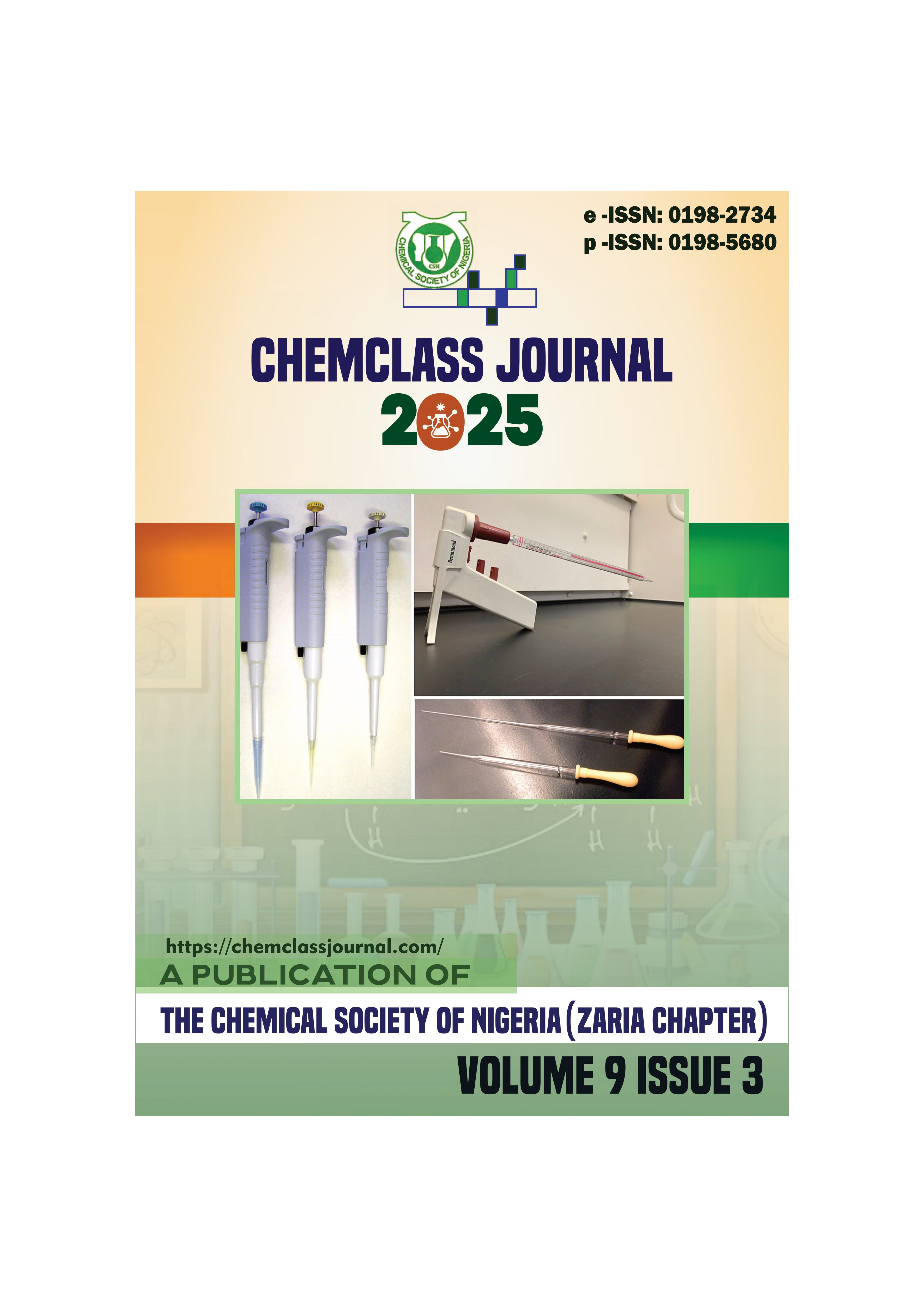Synthesies, Characterization and Biological Activities of 4-Methyl-3,5 diphenylisoxazolidine Derivatives
DOI:
https://doi.org/10.33003/chemclass-2025-0903/22Keywords:
Benzaldehydes, Heterocyclic compounds, Hydroxylamine hydrochloride Isoxazolidine, Medicinal, Propiophenones.Abstract
This study focused on the synthesis, characterization, and biological evaluation of novel 4-methyl-3,5-diphenylisoxazolidine derivatives with potent antimicrobial activity. The target compounds were synthesized microwave assisted synthesis, achieving excellent yields (94.53% and 95.75%) for Isoxazolidine derivatives and moderate to high yields ranging from 68.40% to 98.44% for the intermediate Chalcone. All derivatives were soluble in ethanol but insoluble in water, consistent with their aromatic and heterocyclic structures. Structural confirmation was accomplished through Fourier-transform infrared spectroscopy (FTIR) and gas chromatography-mass spectrometry (GCMS), which identified characteristic functional groups including amine (N–H) (3550 – 3200 cm-1), alkane (C–H) (3000 – 2840 cm-1), and halogen-specific bonds (800 – 500 cm-1), validating the successful incorporation of substituents (bromo). GCMS result further suggest the molecular weights (235.1 and 315.2 g/mol respectively) and molecular structures consistent with the targeted derivatives, including confirmation of halogen substitutions. Antimicrobial activity was assessed against a panel of Gram-positive bacteria (Staphylococcus aureus, Bacillus subtilis), Gram-negative bacteria (Escherichia coli, Pseudomonas aeruginosa), and fungi (Aspergillus niger, Candida albicans). Minimum inhibitory concentration (MIC), minimum bactericidal concentration (MBC), and minimum fungicidal concentration (MFC) assays demonstrated that all compounds exhibited significant antimicrobial effects, with halogenated derivatives showing superior potency, with MIC values ranging from 6.25 - 50 mg/mL. In general, the compounds were more effective against the tested fungi than bacteria. Zones of inhibition(i.e 18 mm) and lower MIC values (i.e 6.25 mg/mL), highlighted it enhanced efficacy compared to the unsubstituted analogue and standard antibiotic controls. The findings underscore the potential of 4-methyl-3,5-diphenylisoxazolidine scaffolds as promising antimicrobial agents, where strategic functional group modifications influence biological activity. The study have laid a foundation for further optimization, mechanistic studies, and development of these derivatives as candidates for combating microbial infections, especially in the context of rising antimicrobial resistance.





 ChemClass Journal
ChemClass Journal
